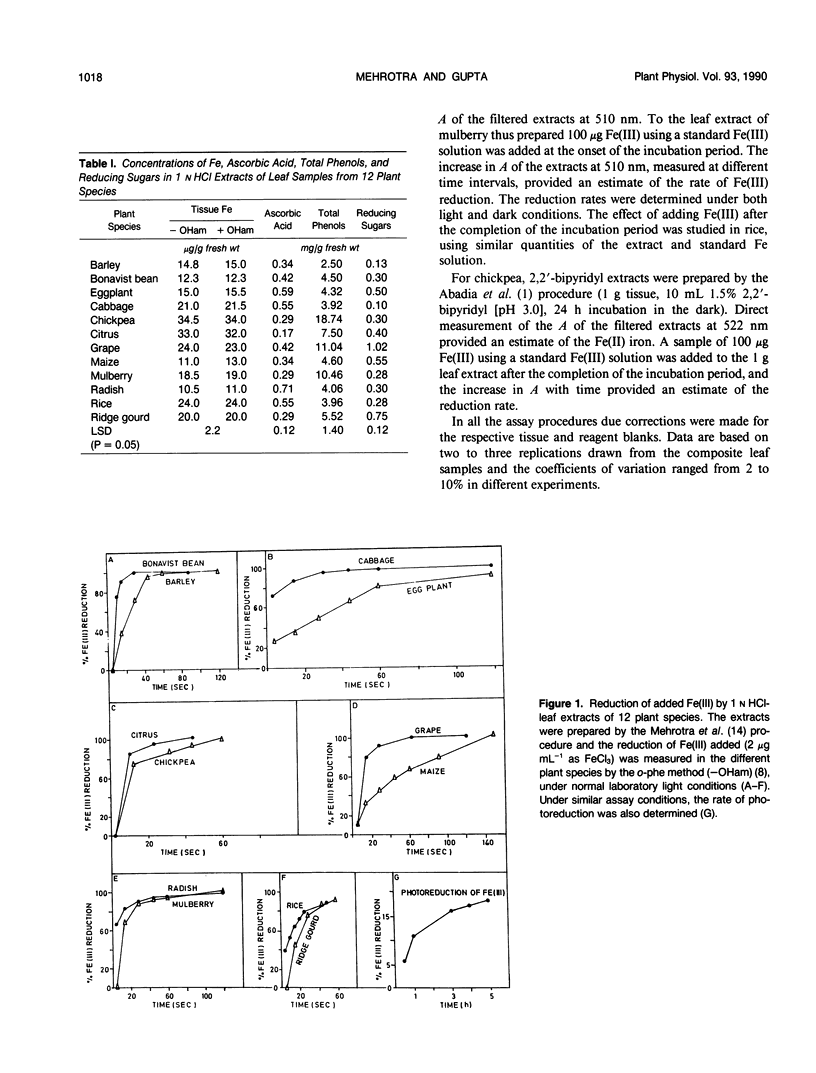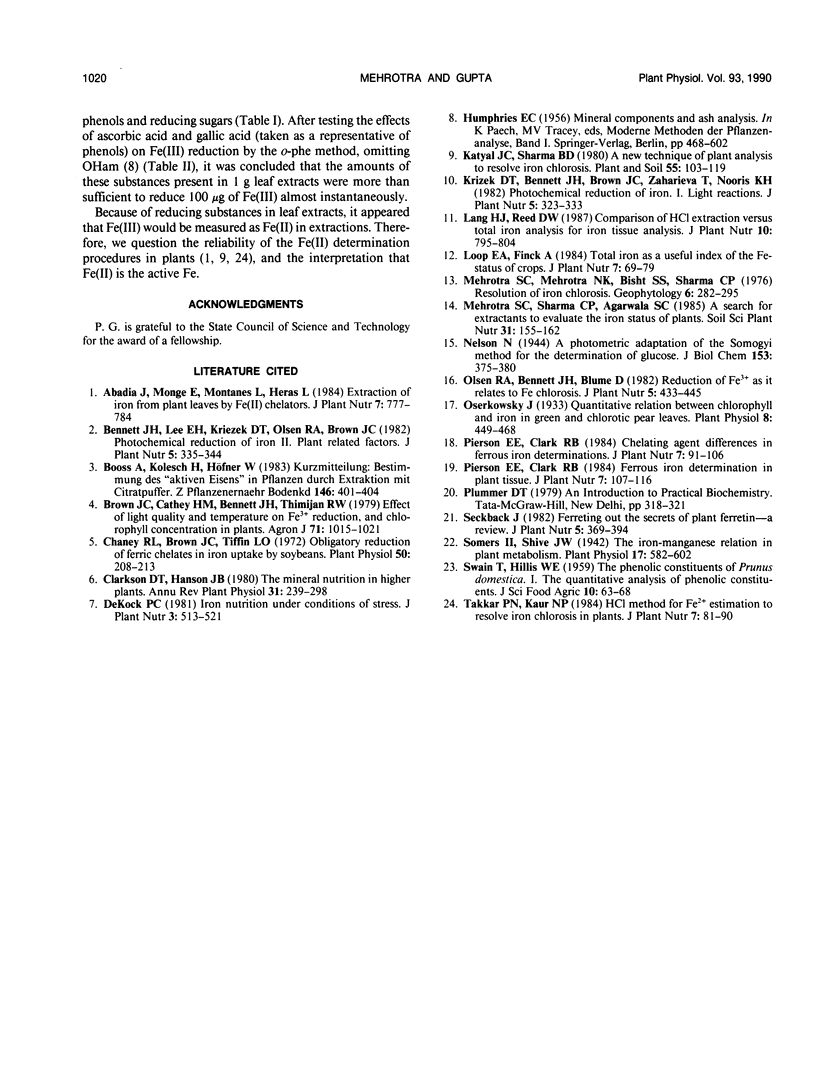Abstract
“Active Fe” in plants has generally been interpreted to be ferrous iron. This study evaluated some of the commonly followed active Fe determination procedures based on Fe(II) measurements. In each of 12 species examined, leaf extracts exhibited strong reducing activity and quickly reduced any added Fe(III) with or without light. The reducing activity was attributed to ascorbic acid and phenols in the plant extracts. The reliability of the Fe(II) iron determination procedures in plants and the interpretation that active Fe is Fe(II) are questionable.
Full text
PDF



Selected References
These references are in PubMed. This may not be the complete list of references from this article.
- Chaney R. L., Brown J. C., Tiffin L. O. Obligatory reduction of ferric chelates in iron uptake by soybeans. Plant Physiol. 1972 Aug;50(2):208–213. doi: 10.1104/pp.50.2.208. [DOI] [PMC free article] [PubMed] [Google Scholar]
- Oserkowsky J. QUANTITATIVE RELATION BETWEEN CHLOROPHYLL AND IRON IN GREEN AND CHLOROTIC PEAR LEAVES. Plant Physiol. 1933 Jul;8(3):449–468. doi: 10.1104/pp.8.3.449. [DOI] [PMC free article] [PubMed] [Google Scholar]
- Somers I. I., Shive J. W. THE IRON-MANGANESE RELATION IN PLANT METABOLISM. Plant Physiol. 1942 Oct;17(4):582–602. doi: 10.1104/pp.17.4.582. [DOI] [PMC free article] [PubMed] [Google Scholar]


